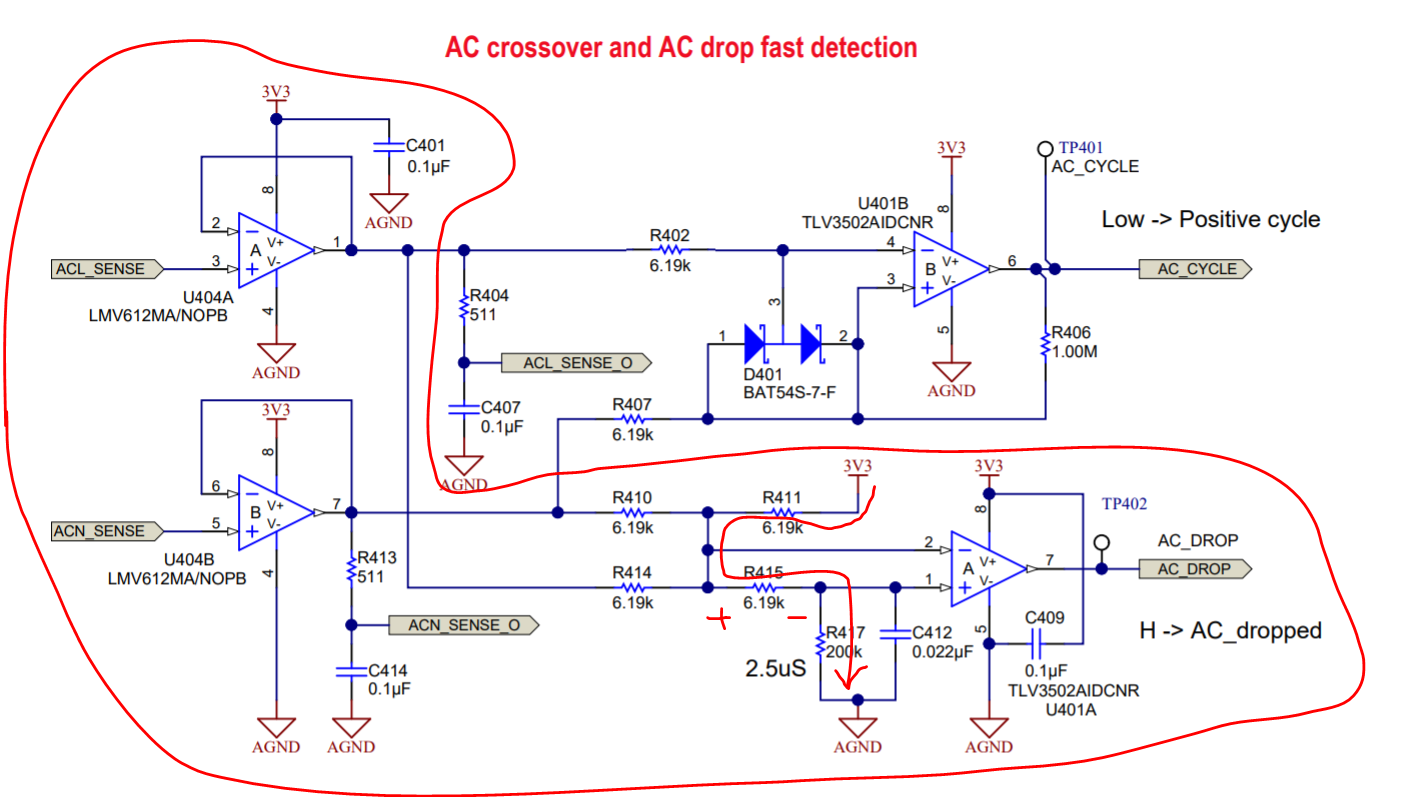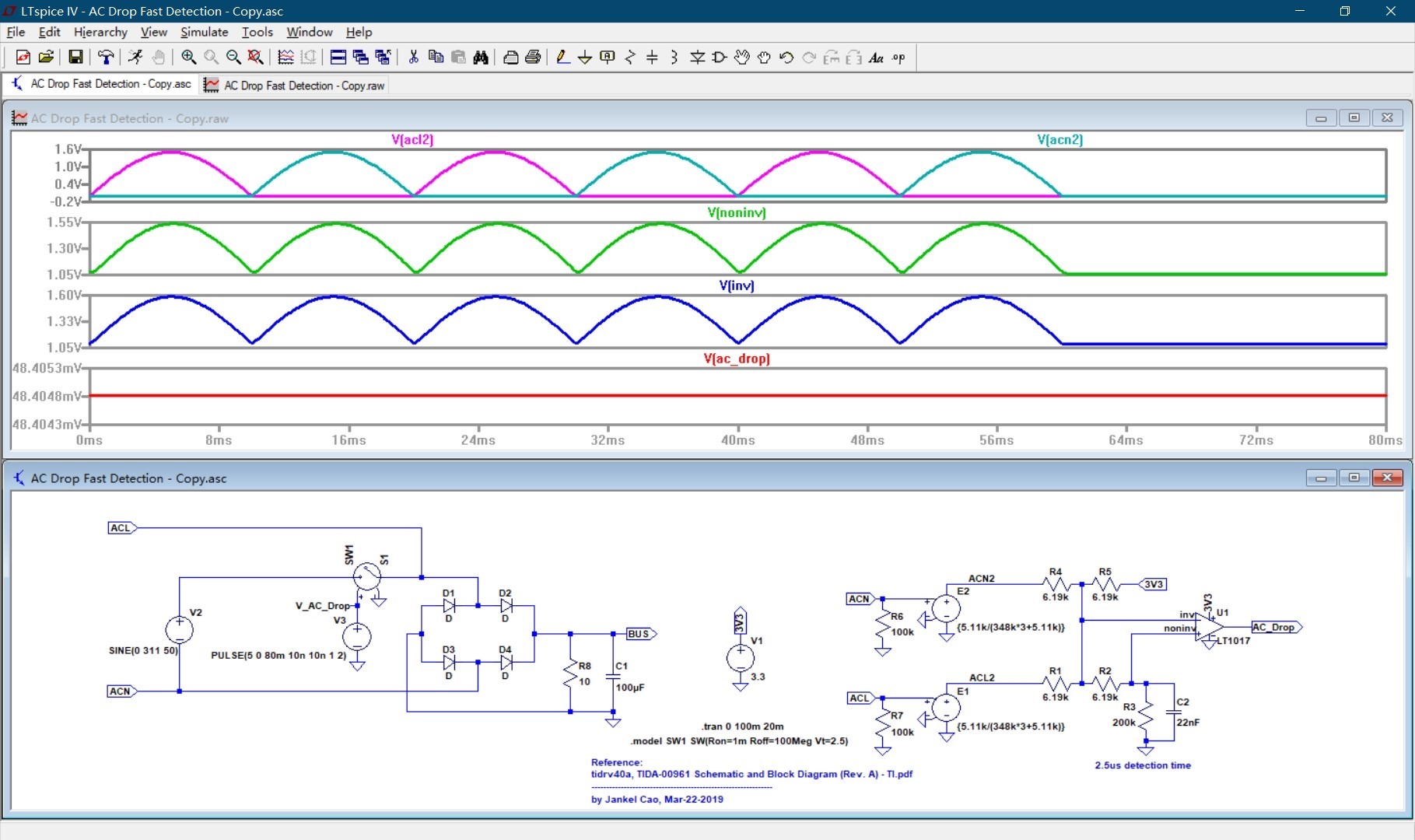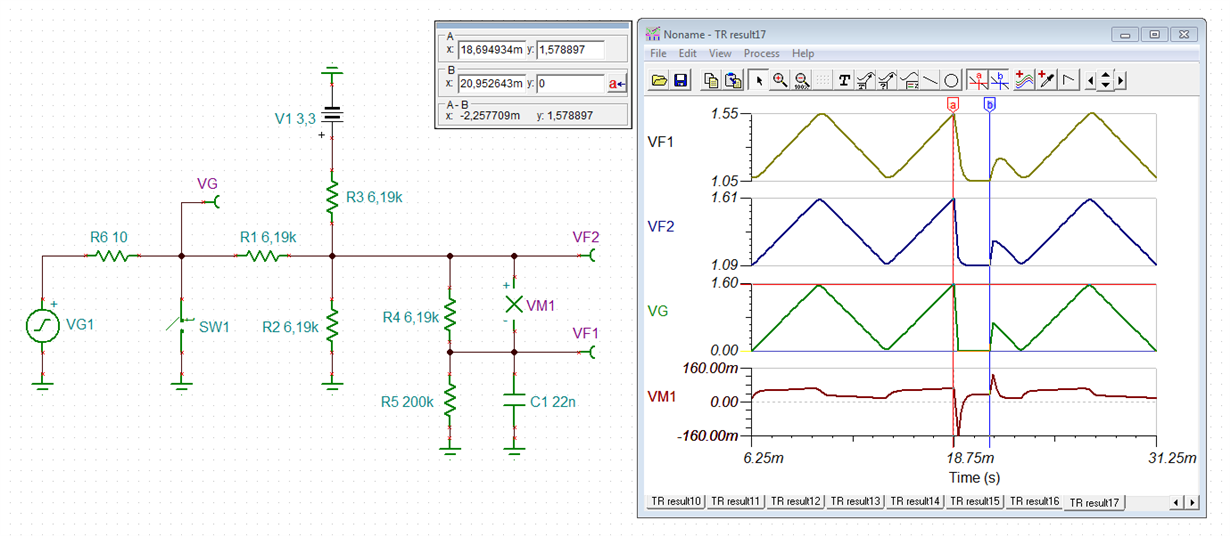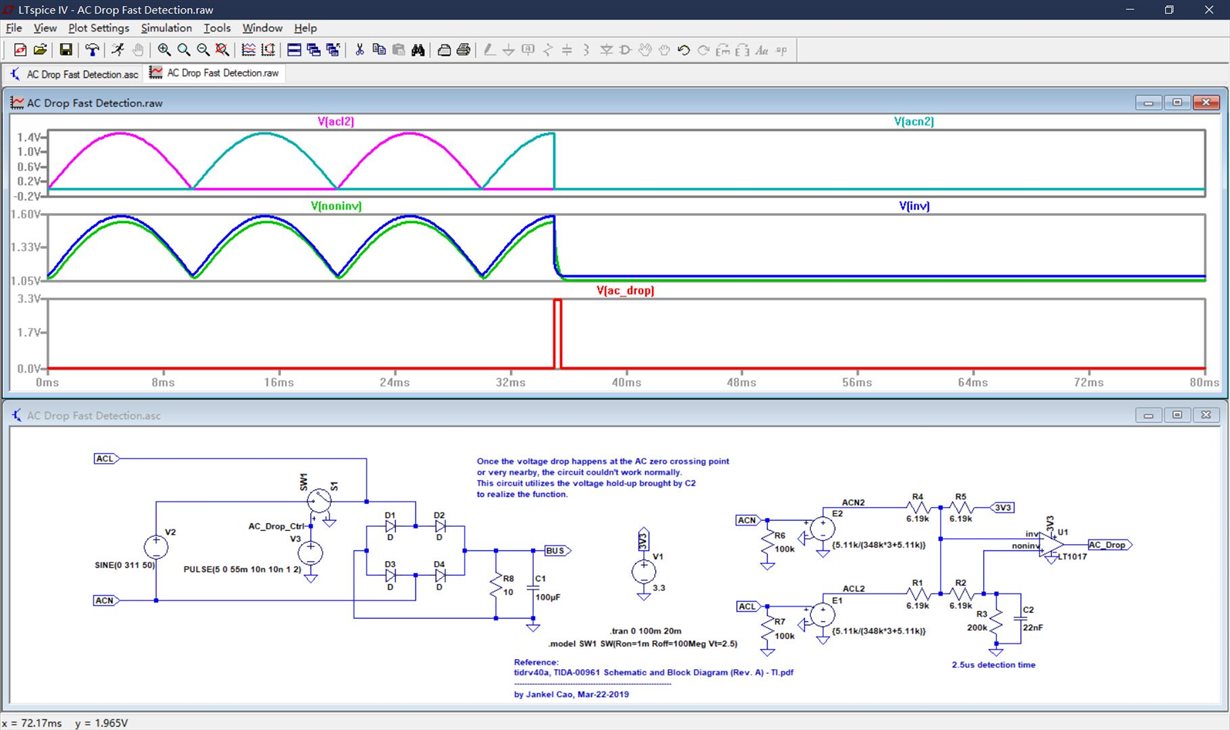Hi,
In this TI Design "tidrv40a",
http://www.ti.com/lit/df/tidrv40a/tidrv40a.pdf
I don’t think this circuit will work normally as we want.
We can see from the capture above, while the AC input drops, that’s to say, the voltage at the left terminal of R410 and R414 would be 0.
In this condition, the voltage across R415 would continue to make the output of the comparator U401A low rather than turning into high level.
I also do the simulation of this circuit in LTspice and found it did work abnormally.
We can see V(ac_drop) is always low even when AC input drops.
If there would be someone could check it?
If it could work, please tell me how it works and why my simulation result shows it didn’t work normally??? Thanks a lot.
PS: The simulation file is attached.






